Opus, Trafó, 24 & 25 January 2020, 8 pm
The day before our phone discussion, he just returned to his homeland Greece from a journey where he showcased two of his works: Elvedon, which was his very first choreography, and Opus, the one that will be presented in Budapest in the coming days. I mostly asked about Christos Papadopoulos about the latter, but as you can see below, we even tackled a bit of art theory, some abstract considerations, and even ancient Greek theatre against the backdrop of contemporary Western culture…
Opus is a choreography based on Johann Sebastian Bach’s music. What is the reason for this choice?

This idea comes from the way how I have been perceiving classical music. When I was listening to any kind of it, not only Bach, I saw an explosion of movement in my mind, how the different sounds collaborate, how a rhythmical game in space is played. I could see all the dialogues between the instruments. And then I thought about: how can you visualise music? How can you experiment with such a visibility? I recalled those screensavers that follow music with some moving abstract graphics – as an early inspiration.
What I wanted to see is how one can perceive music as a complex system of sounds and then simply visualise it, without the usual way of interpreting music, especially of the melody line. I was not interested in the emotional or psychological outcome of the music but went for the core, the structure, to see it as a series of mere sounds. The next question was how this all can be related to the human body.
Bach has an amazingly complex way of creating music, so I found him very much suitable for my experiment. When I started, I was looking for bigger musical compositions, but soon I realised that I would need years to do enough research on a monumental piece. So I took the Art of Fugue which is only 4 minutes long, but and I love the way how the music progresses from the beginning to the end. It is complex enough to get the best of Bach’s style, and at the same time short enough to be able to work with it.
How do you mean you wanted to go against the emotional interpretation? The audience will react to the music, after al…
Of course it will have an emotional impact on the audience, there’s nothing wrong with it. I just didn’t want my creational process to be influenced and biased by how the music works on me personally. The emotional outcome for the audience is always the result of circumstances, situations, but I did not want, for instance, the melancholic melody line to influence me and my work in a melancholic direction. I only wanted to work on the roots, the sound itself. If it, at the end of the process, produces feelings for the audience, it’s another issue then.
For example, if you take a melody line and then zoom in, you hear the first note, like a ‘do’, and then you put another sound, like a ‘re’, but they are just sounds. But when you put them altogether and fix their rhythm and create a melody line, then it might be a melancholic one. Emotion is a result of these little sounds creating a more complex system together.
I also read that the dancers’ bodies represent the instruments.
Exactly. When I first thought about how the music can be visualised, I said to myself: okay, we have this piece, and one instrument will be one body. That is why I have four dancers, because there are four instruments in Bach’s work: flute, cello, bass clarinet and violin. Every type of sound, every musical organism is represented by a human body. Or it is more like the body trying to make connection to the music – the two are seeking for each other.
When you invited the dancers to take part, how did you explain to them what you expect from this piece?
(laughs) My idea, from the beginning, was very clear. I want to make an experiment, and the audience will see a visualisation of the music scores of Bach, nothing more, nothing less.
“So we’re going to be music, guys”
– that is what I said to them. However, I did not know how this will happen, and therefore we went through many stages of trying to collaborate with the music. Like how the sound is working for the instrument: you can hear, for instance, how the violin is scratching the chord. You really hear these small scratches. So we went for all these little sounds and tried to recreate them. It has been a constant work for four months. For the first one and a half, we just listened to the music over and over again, until the dancers knew it by heart, until the tiniest little detail. Then we started the movement experiments. The dancers were also actively involved in the creative process.
Do you usually work like this?
Usually I am more prepared. For other projects, it is more like me spending that four months’ time alone in the studio to have clear and detailed concepts for the subsequent joint rehearsals. After my careful planning, it is up to the dancers whether they take my instructions as they are or give a bit more of their own physical interpretation. In the case of Opus, it was the other way around from the start: we worked on the concept together. I usually know my limitations; here, I had to investigate them and get to know the whole area to work with, and the dancers helped much more than they usually do.
Are they members of your company?
Yes, they are all people I collaborate with, we are friends, and most of them are also in my other plays. Now that the tours are getting more and more demanding, and the dancers are freelancers, it is getting harder to find everyone available for such a trip. Last February I gave a big audition in Greece for almost 300 people and extended the group. With dancers from the new generation, we worked hard through the summer to create a second cast for Opus. Now we are a bigger family and can be more flexible with the trips. In Budapest we will present a mixed cast: Ioanna Paraskevopoulou, Maria Bregianni and Amalia Kosma are from the original one, whereas Dimitra Mertzani is from the newer. It took a lot of time to educate the newcomers, so it is good now to have us covered. For such a piece, it is impossible to let an outsider jump in after only a few weeks of practice. After such a hard work, I am happy to reward the new cast with more and more performances – I like to mix them with the original cast, so that we have more and more new compositions.
What does “classical” mean to you, in terms of music or more generally?
Opus is a project with roots in the “classical” world. For example, in ancient Greek tragedies, one important principle was to keep distance from the emotions. Even if they are tragedies, or “dramas”, ancient Greeks emphasized not to show emotions for most of the dialogical and action-based episodes. Then the a special part comes when the chorus is entering the stage, singing, dancing, involving the audience, and letting emotions evolve and worked through. It was all very well structured in the ancient times.
Sometimes I feel that in Western arts, emotion is overestimated. I like to go back to some more fundamental, basic, simple principles to work with. I do not want to make any conclusions here, but if I have to work with an emotion like if you wanted me to make a piece about loss or fear, I would be totally blocked and not be able to do it. Because in my mind, senses are so vague, so intimate, I just can’t really see how to work with such things. But there’s a point where emotions can be connected to practical issues, and that is what I can work with.
Isn’t it because you are a choreographer who doesn’t really use verbal storytelling, and the Western understanding demands us to verbally handle with our emotions – name them and talk about them?
I am not sure, it might be right. But it is intriguing that the historical roots of dance, the folk dances, all kinds of rituals, functions of body engagement have developed in the complete opposite way. They were there to unite people, to express collective and individual emotions, to create a space of feeling free. So the ambivalence of verbal and bodily storytelling might be a very Western, logical conclusion, but the cultural and historical development seems to be different.
But if the question is how and why modern dance developed further away from traditions…?
I don’t know. What is modern dance at all? Is it conceptual, is it physical? Is Opus, or any of my works, modern dance? I can’t really answer this question. These things get more and more vague for me, but anyway, I’m not too much of a theoretical person, so I try to stay away from those abstract reasonings and focus on the practical realisation. Opus seems to be conceptual, but it more like really physical. Who knows whether it is modern art? And is the question relevant at all?
One more hard question: why and how did you decide to become a choreographer?
I think my choice to make dance and choreography is connected to nature. I don’t remember one single moment in my life when I decided about my future, but I remember my life back then very well. I grew up in a small village in Peloponnese as a farm boy, a pretty much nature-oriented boy. I loved to look at birds, the endless blue sky, I often went to the mountains with friends, I just adore seeing how nature slowly moves. This sounds romantic but it is true. Maybe my main motivation to be a choreographer has been to get close to those movements of nature through my work.
And don’t get me wrong, I don’t want to say I’m not emotional. Indeed, when I see my play and if the system that I built up is really working, then I’m literally crying. I want the audience to feel as well. The only reason why I go for structures and actions during the creative process is that I want to find the core of my research and go for that. To pick up a similar example: I can enjoy an emotional poem but still see that it is actually a series of letters creating a series of words, and I can work with these elements instead of the overall “message” of the poem. Same applies to the music we are working with. Emotions might bring me to misleading paths during the process. But of course, this all is an emotional trip, we are not robots, neither my dancers nor I. It’s just that I want to reach emotion through the action and the praxis – and not the other way around.



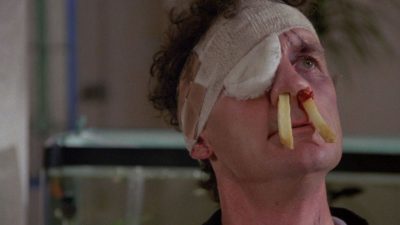

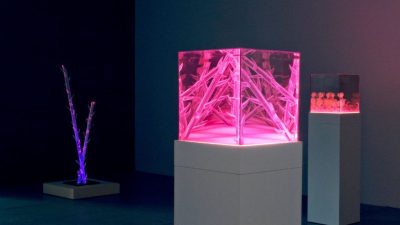
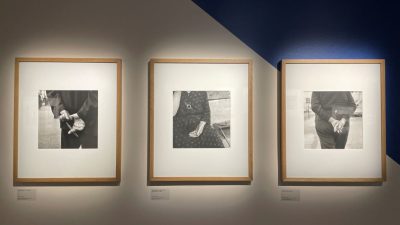










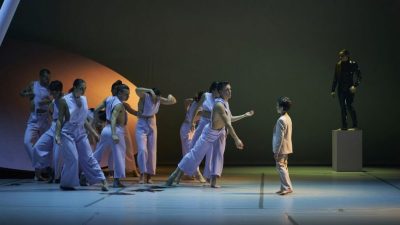





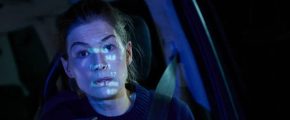
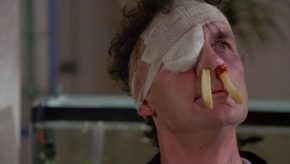
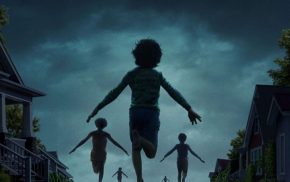
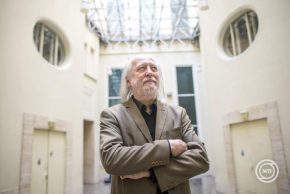
Comments